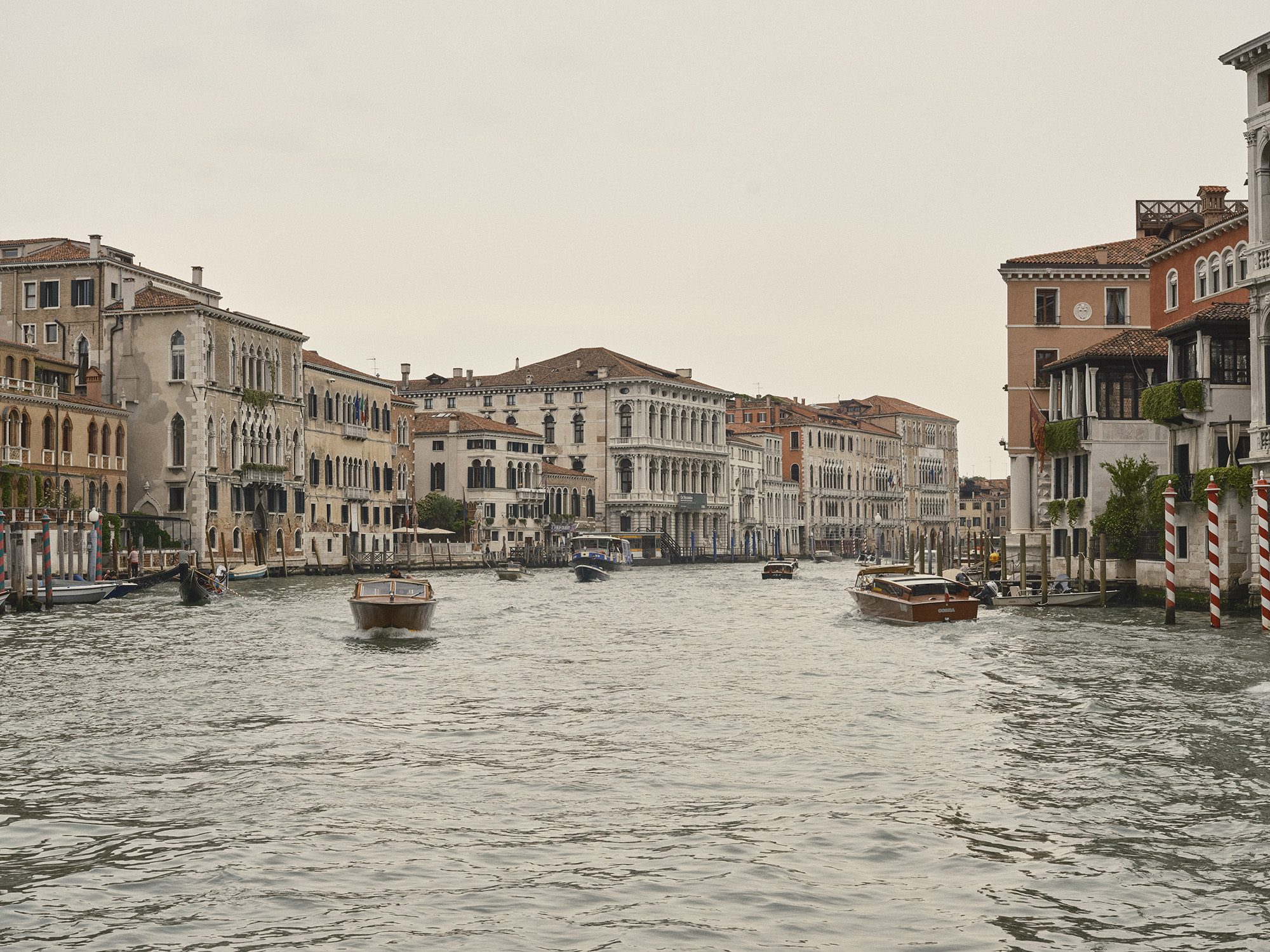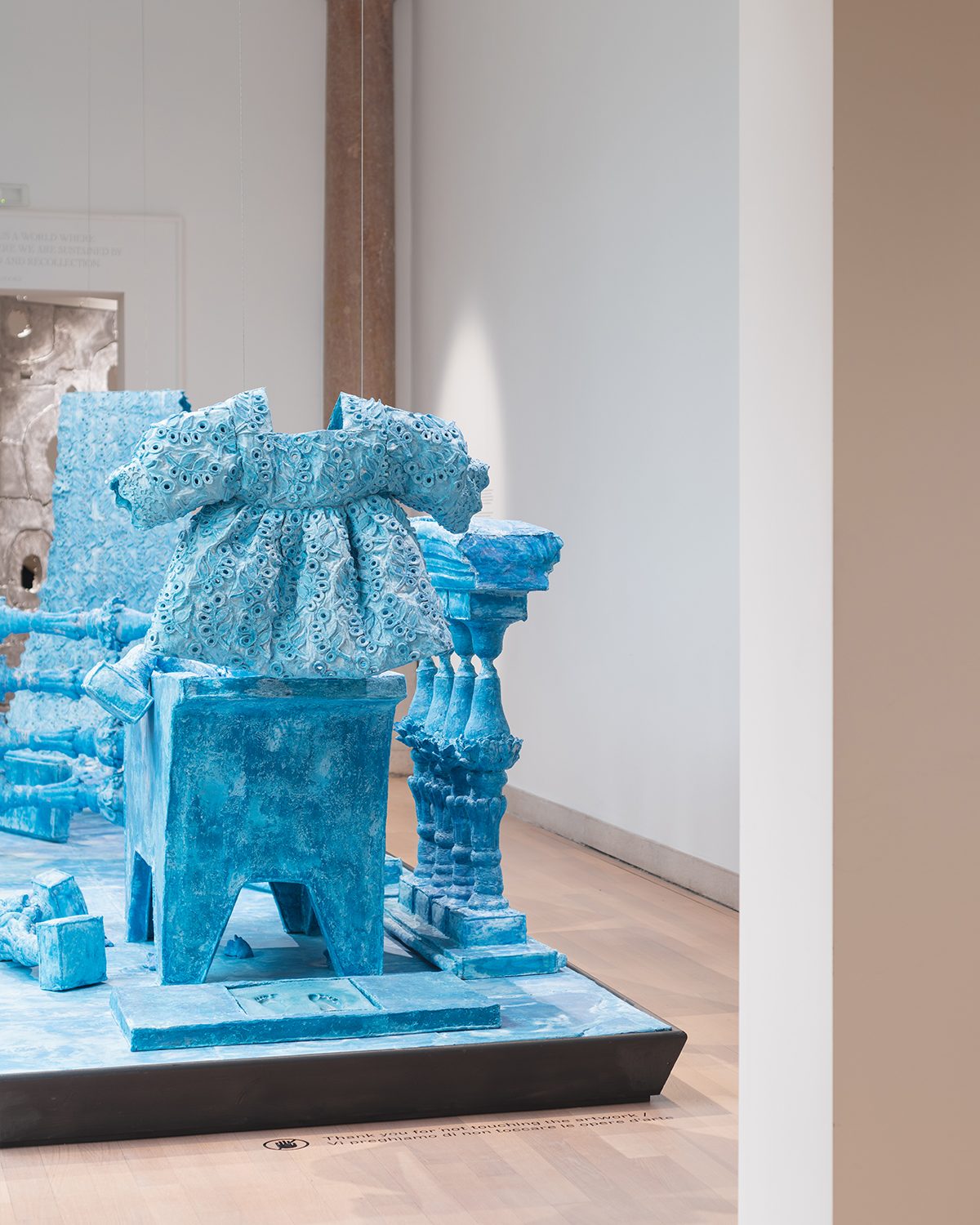
Biennale Architettura 2023: The Laboratory of the Future
Re-telling the story of architecture
The way in which architecture is understood and portrayed is always fluctuating as new challenges arise. Contemporary architecture is broadening the boundaries of what the artistic practice itself encompasses as new perceptions and new ways of experiencing are presented. Over the last decades, architects and designers have brought some of the most revolutionary and inclusive changes into the industry.
 Process collage of Threads installation by kate otten architects
Process collage of Threads installation by kate otten architects However, applicable to every aspect of our society and the arts that are part of it, there are still many necessary advancements that ought to occur. This underlines the importance of constantly reevaluating the question: “What is the aim and purpose of contemporary architecture?”. This also means that the significance as well as the purpose of architecture exhibitions must also be reevaluated in order to find a reason why they are justifiable and needed.
 Surfacing — The Civilized Agroecological Forests of Amazonia by Estudio A0
Surfacing — The Civilized Agroecological Forests of Amazonia by Estudio A0 Clay installation by Francis Kéré
Clay installation by Francis KéréAll of these queries have fueled the gestation of this year’s Biennale Architettura 2023, the 18th International Architecture Exhibition. Titled The Laboratory of the Future, this year’s exhibition is based on the motivation of being a “kind of rupture, an agent of change, where the exchange between the participant, the exhibit and the visitor is not passive or predetermined”. The Laboratory of the Future isn’t motivated by the aim to provide solutions, but means to create a reciprocal and unpredictable dialogue that moves us into the path of building another future.

And in which way is this year’s exhibition an agent of change? And to what extent an exhibition of this scale, which takes a toll on climate change, is justifiable? This year’s curator herself, Lesley Lokko, has the answers: “For the first time ever, the spotlight has fallen on Africa and the African diaspora, that fluid and enmeshed culture of people of African descent that now straddles the globe”.
 The Parliament of Ghosts installation by Ibrahim Mahama
The Parliament of Ghosts installation by Ibrahim Mahama Belgian Pavilion
Belgian PavilionLesley Lokko and her team kept going back to the need of turning an architecture exhibition into a need, where the costs and the consequences of it were worth it. And, after several months of conversations, calls and meetings, finally a new interpretation surfaced: an exhibition that not only wants to be a narrative unfolding in a space, but also makes visible questions of production, resource and representation.
 Swiss Pavilion
Swiss Pavilion British Pavilion
British Pavilion  French Pavilion
French Pavilion British Pavilion
British PavilionAs the president of La Biennale di Venezia, Roberto Cicutto, has expressed, this year’s Biennale Architettura is a step towards revealing the many flaws that still surround us in today’s world by taking into consideration a continent that we all speak about, but that in reality we do not know or understand. A continent that has already experienced and keeps on experiencing many of the critical issues affecting the world today.
 Spanish Pavilion
Spanish Pavilion The 18th International Architecture Exhibition was inaugurated on May 20th and will be open to the public until November 26th 2023, at the Giardini and the Arsenale, and at the Forte Marghera. Fighting climate change is very present in the organization’s values and sustainable models have been applied to the design, the installation and the operation of all the events.
 Tectonic Shifts by Wolff Architects
Tectonic Shifts by Wolff Architects  Afrogallonism by Studio Serge Attukwei Clottey
Afrogallonism by Studio Serge Attukwei ClotteyThe Laboratory of the Future is constituted by six parts, and it includes 89 participants, over half of whom are from Africa or the African Diaspora. Not only is it the first time that Africa is the focus, but also the first time in which nearly half of the participants are from sole or individual practices of five people or less. As the name of the exhibition itself says, the objective is to imagine a better world in order to be able to eventually turn it into a reality. Therefore, the show starts in the Central Pavilion, where 16 practices who represent a distilled force majeure of African and Diasporic architectural production have been gathered.
Amongst the works presented in the Arsenale complex (the Dangerous Liaisons section) and in Forte Marghera (Curator’s Special Projects category), are young African and Diasporan practitioners, also defined as the Guests from the Future.
 British Pavilion
British Pavilion  Republic of Kosovo Pavilion
Republic of Kosovo Pavilion Japanese Pavilion
Japanese Pavilion Their projects are directly aligned with the themes of this exhibition: decolonization and decarbonization. Implementing these phenomena as the protagonist, these practitioners provide a snapshot of future practices and ways of seeing and being in the world.
 Spanish Pavilion
Spanish Pavilion 
Stated by the Curator herself, the use of the word “practitioners” has been specifically thought out and chosen to refer to the participants: a way of making it obvious that they are more than architects, urbanists, designers, landscape architects, engineers or academics. By employing the term “practitioners”, the idea is to convey that we are in need of a different and broader understanding of the term “architect”, in a complex world where different realities are taken into account.

This is the reason why exhibitions of this kind are necessary in today’s society. Recognizing the centralized narratives that practices, arts and studies have maintained for centuries is essential in order to build a future world that listens to different voices, not exclusively to a privileged one.
 Dutch Pavilion
Dutch Pavilion  Belgian Pavilion
Belgian PavilionAs expressed by the Curator, “in architecture particularly, the dominant voice has historically been a singular voice whose reach and power ignores huge swathes of humanity”. It is an urgent mission to create a space where all cultures and realities are present: the story of architecture seems to be incomplete, and exhibitions like The Laboratory of the Future can play a part in re-telling this story.
 Installation by Arinjoy Sen
Installation by Arinjoy Sen 








